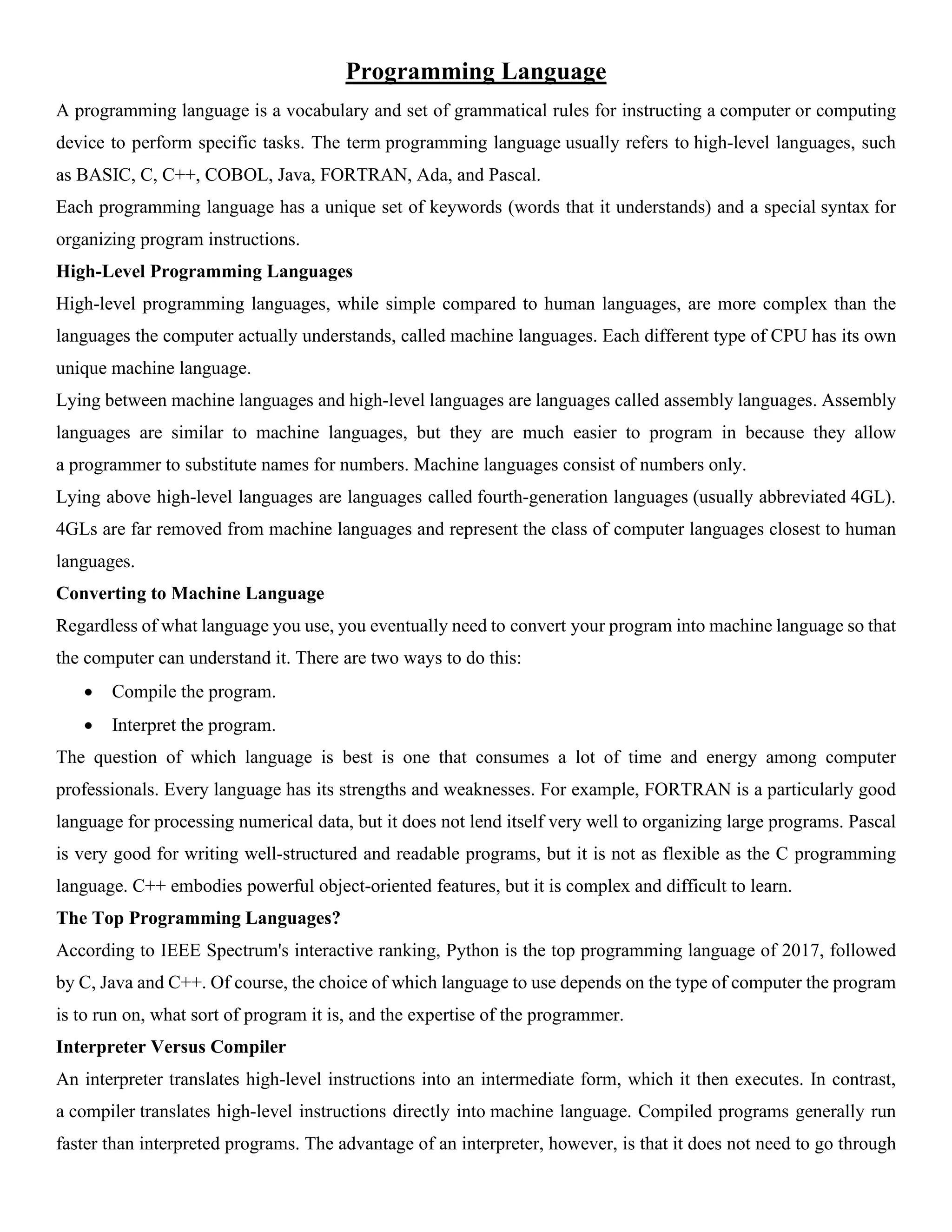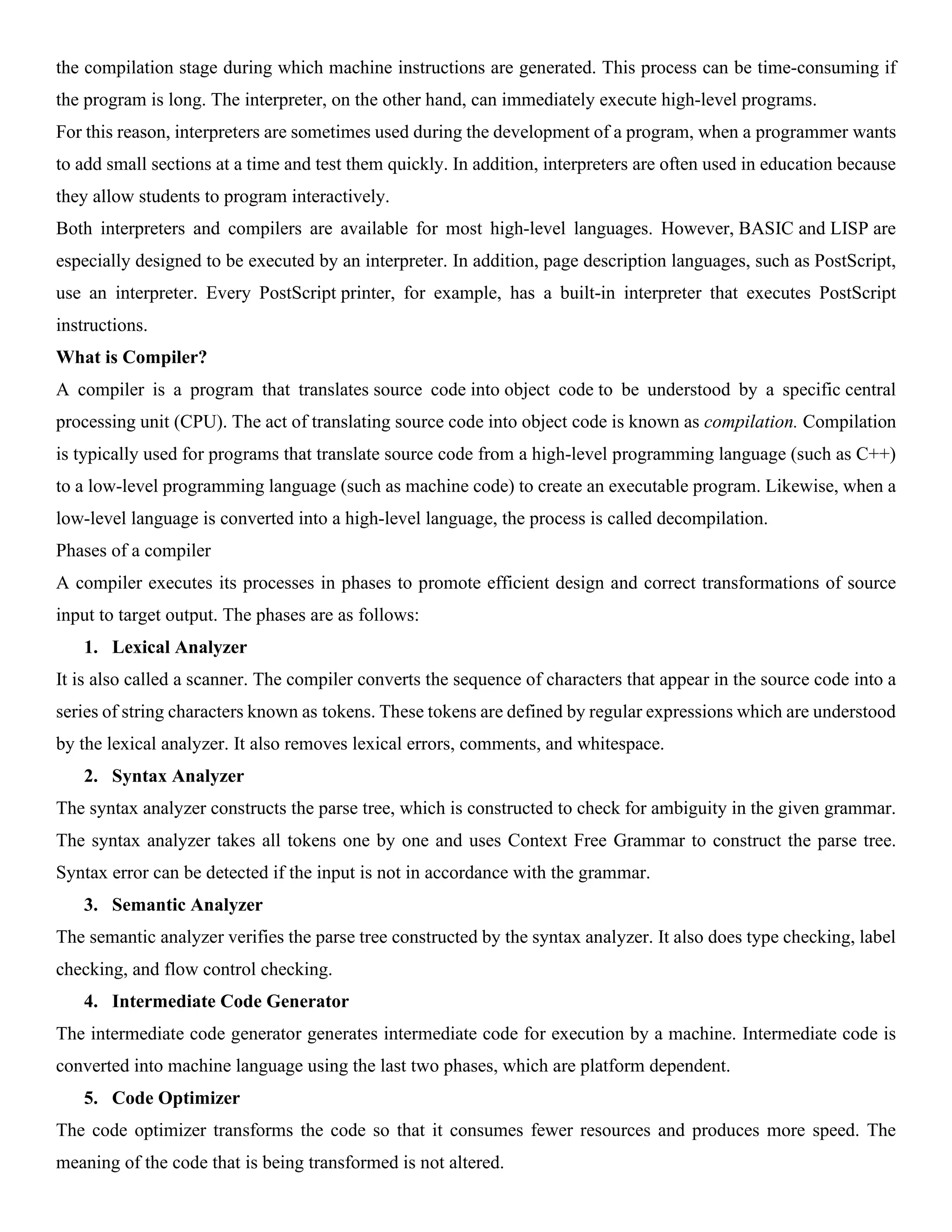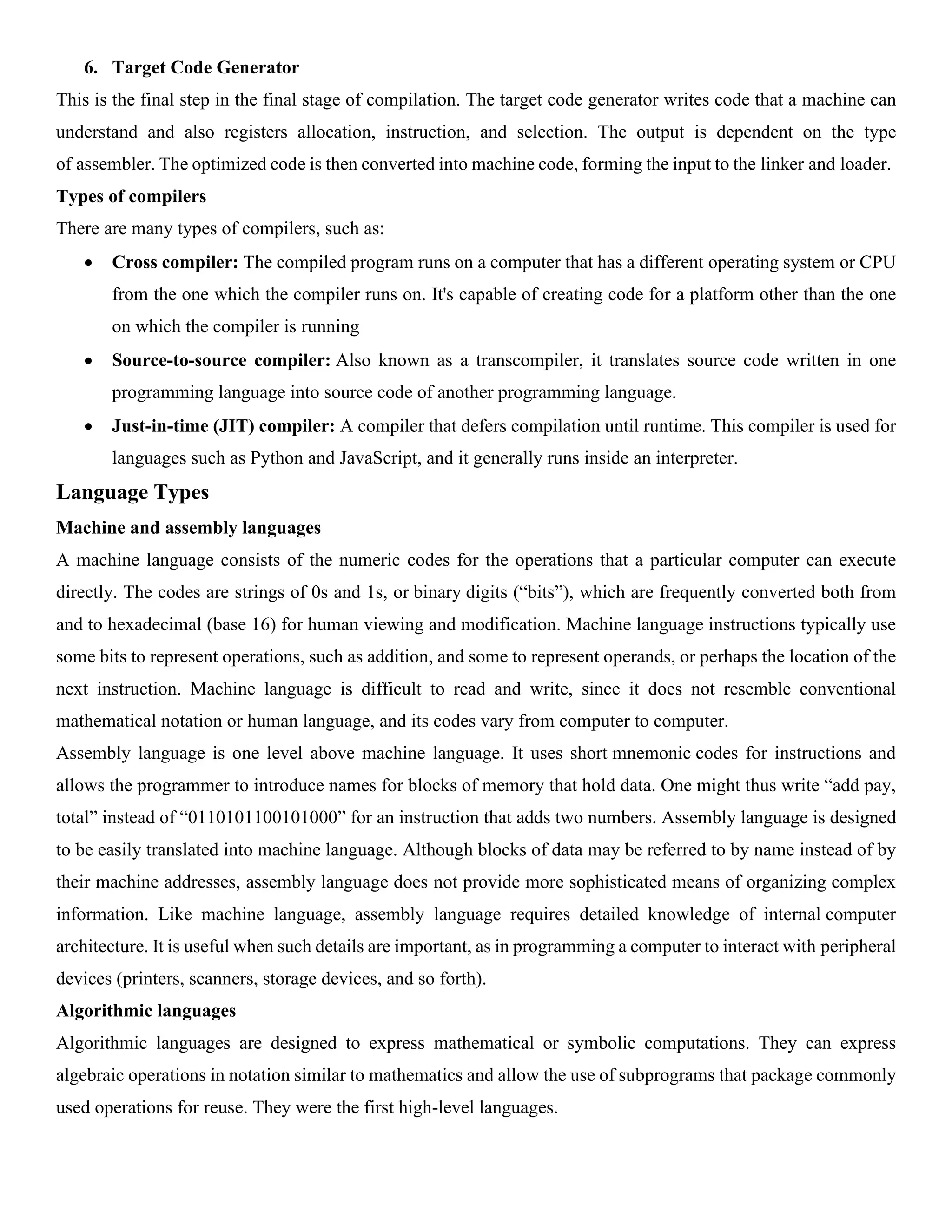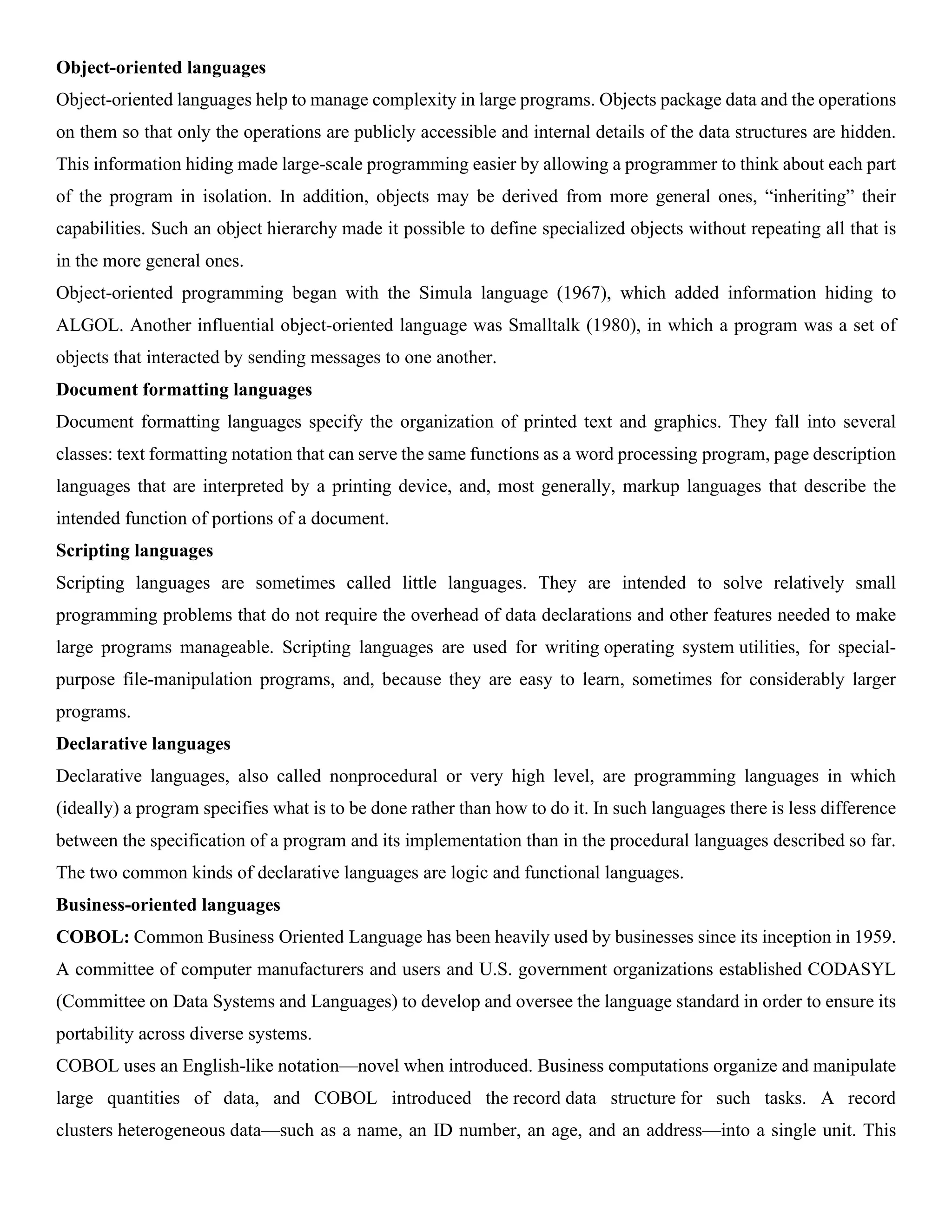A programming language is a vocabulary and set of rules that instructs a computer to perform tasks. High-level languages like BASIC, C, Java, and Pascal are easier for humans than machine language but still need to be converted. Conversion can be done through compiling, which directly translates to machine language, or interpreting, which executes instructions without compilation. Popular languages today include Python, C, Java, and C++.




